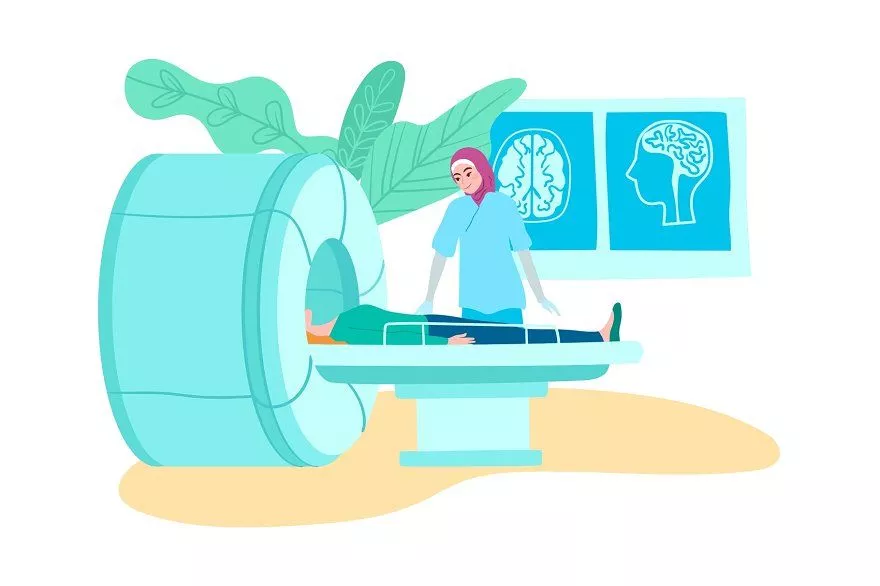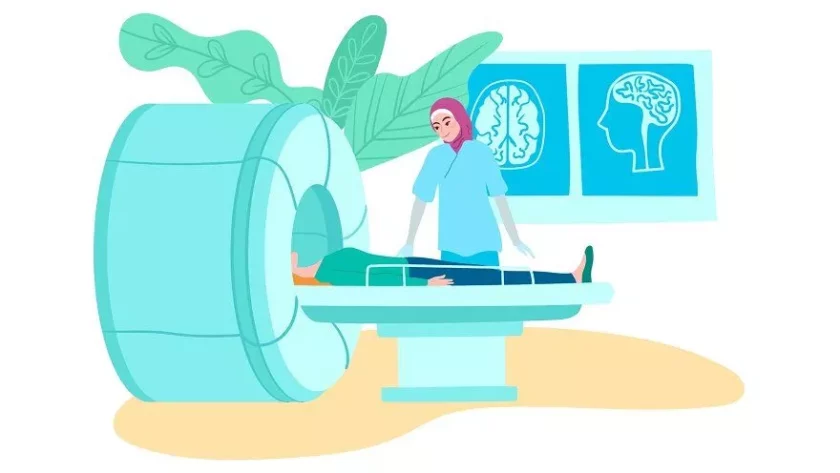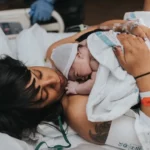Breast cancer commonly develops in cells from the lining of milk ducts and the lobules that supply these ducts with milk.
BC is the leading cause of cancer death in women globally.
A study of data from China shows that the incidence rate of BC also raises per year (272 400 cases in 2015 and 367 900 cases in 2018) (1).
There are many things that may cause BC such as – age, smoking, alcohol use, obesity, family history, lifestyle environments
Too quick or early diagnosis is the best way to prevent cancer’s possible risk.
NOTE: Screening is used to look for earlier stages of cancer disease, which is when the cancer is most curable.
The survival rate increased due to the dramatic change in the screening methods, early diagnosis, and breakthroughs in the treatment.
Check Out – Breast Cancer: Reason, Signs, And Symptoms

Diagnose
Contents
There are many ways where doctors test and procedures used to diagnose breast cancer including:
Breast test
In this, the doctor will check your both breasts and lymph nodes in your armpits, feeling for any lumps or other abnormalities.
However, if lumps are not diagnosed then, the doctor may perform other imaging tests (show pictures of the inside of the body)
Mammogram
A mammogram is an X-ray of the breast, it is commonly used for breast cancer (2).
Even evidence mark that, the mortality rate of BC patients could be reduced by 30%‐40% through early MG test.
It is recommended in most cases because it provides rapid screening, high accuracy, low cost, and is suitable for promoted use.
MG needs a harmful contrast agent to do imaging, so it is not recommended, even in short term.
NOTE: Even it is not recommended used for patients under the age of 40 (3).
MRI (Molecular breast imaging)
It is a powerful imaging tool that produces high-resolution images without requiring harmful radiation.
MRI can be used in situations where the primary breast cancer is too small.
It has many pros, but still many factors that affect the wide application of MRI include:
- long imaging time
- high cost
- you are not allowed to carry metal material while scanning
- in some people, this small space may trigger claustrophobia
NOTE: Before breast MRI, you receive an injection of fluid, because MRI doesn’t use radiation to create the image, unlike others.
Ultrasound
Also known as sonography, where this machine uses sound waves to create a picture of the breast tissue.
It is not harmful to humans and is suitable for every one (4).
The advanced US can clearly reflect the situation of tumor and blood flow information and can distinguish between mild and severe tumors (5).
When mammograms cannot be used, then an ultrasound can become an alternative diagnostic way for breast cancer.
Breast biopsy
Unlike other tests which just suggest that cancer is present, a biopsy is the only definitive way to make a diagnosis of breast cancer.
In this doctor, insert a specialized needle inside your breast to diagnose breast cancer (6).
There are 2 types of breast biopsy include:
- FNAC is the least invasive – where a thin, hollow needle is inserted into the breast to withdraw cells.
- CNB uses a larger needle – Unlike cells, it removes a small cylinder of tissue (a core) size of a grain of rice.
Also, a small metal marker is left at the site within your breast so that area can easily be identified on a future imaging test (7) (8).
Some other tests
There are some other tests that can not clearly diagnose BC but are helpful in other future performing tests.
And may be used when a doctor has diagnosed your breast cancer these tests include:
- Blood tests, which include a complete blood count
- breast MRI
- bone scan
- CT scan (Computerized tomography)
- PET scan (Positron emission tomography)
Treatment
Early detection and treatment are critical to curing Breast cancer (9).
Breast cancer depends on various factors, including the stage of cancer and the person’s age.
Treatment is harder to perform when the cancer is more advanced, so early detection is vital to cure BC.
There are many types of BC like surgery, radiation therapy, chemotherapy, endocrine therapy, and targeted therapy.
Surgery
An operation where doctors cut out cancer tissue (10).
Surgery is usually followed by other therapy to ensure full recovery and minimize the risk of metastases (11).
Once the tumor has been removed, if a woman desires to reconstruct her breast then the doctor may perform plastic surgery.
Radiation therapy
RT is a process in which cancer cells are exposed to high levels of radiation directly similar to X-rays, which kill cancer cells (12).
Radiation therapy after surgery shrinks the tumor in combination with chemotherapy.
It has some side effects such as:
- A decreased sensation in the breast
- skin tissue in the treated area
- soreness, itching, peeling, and redness.
Endocrine therapy
ED slows or stops the growth of hormone-sensitive tumors by blocking the body’s ability to produce hormones on breast cancer cells.
Medication
Medication used after surgery or therapy is called adjuvant therapy (13).
However, it also damages fast-growing normal cells, which may cause serious side effects like damage to the heart muscle (14).
There are 3 main groups of medication are used for BC treatment – monoclonal antibodies, hormone-blocking agents, etc.
Chemotherapy
Chemotherapy is a drug treatment that uses powerful chemicals to kill fast-growing cells in your body (15).
It is mostly used for cases of breast cancer in stages 2 and 4 (16).
Using medicine to kill the cancer cells, these drugs are taken by veins, mouth, or sometimes both.
However, most CT medicine work by destroying the fast-growing cell, but also causing DNA damage.
CT for breast cancer carries a risk of side effects such as:
- Temporary and mild pain
- weight loss
- permanent medication
- hair loss
- pain in the affected area
- effect fertility
- may lead to other diseases
Potential ways to reduce the chance of breast cancer
Women can reduce the chance of breast cancer by maintaining a healthy lifestyle which includes:
- Healthy weight
- reducing alcohol use
- increasing physical activity like walking, running, yoga, etc
- breast-feeding – The longer you breastfeed, the greater the protective effect.
- stop smoking
- diet
Research, results reveal that high levels of physical activity reduce the risk of breast cancer by about 14% (17).
Daily exercise, also reduces the obesity risk, as well as the chance of other diseases like heart, diabetes, et (18)
Diet high in vegetables, fruits, legumes, whole grains, and lean protein is allied with a lowered risk of (BC) (19).
Omega-3 fatty acids and high soy-based foods may reduce the risk of BC (20) (21).
Pre-emptive surgery
Removing the breast which has cancer may reduce the risk of cancer in the second breast.
However, it is unclear or no hard study has shown that removing the breast which has cancer improves the survival rate (22).
Breast cancer and pregnancy risk
BC affects about 1 in 3000 pregnant women and is the second most common illness affecting pregnancy (23)
After the first trimester, (chemotherapy used for treating breast cancer) has not been associated with any birth defect (23).
There is no evidence from the previous history of breast cancer in the mother has any effect on the baby
Diagnosing cancer in pregnant women is hard because any symptoms are commonly believed as similar to pregnancy symptoms.
As a result, cancer is typically discovered at 3 or 4 stages, where is cure becomes difficult.
Treatment is more difficult during pregnancy, it takes more precautions like that only affect part will be a trigger (23).
In some cases, treatment is postponed until after birth, however, surgery is generally considered safe during pregnancy.
Any type of medicine, or therapy, where radioactive light kills cancer cells, may also affect a baby’s health.




